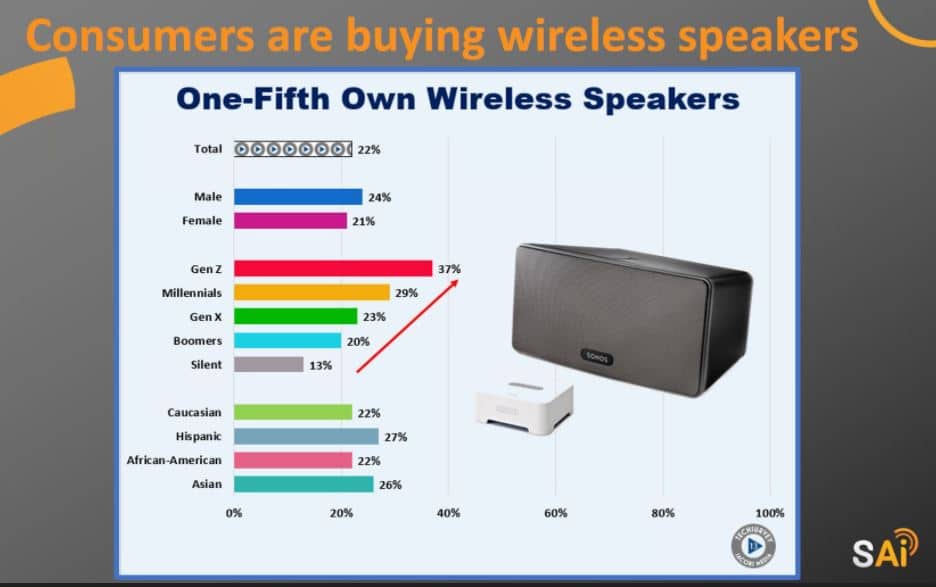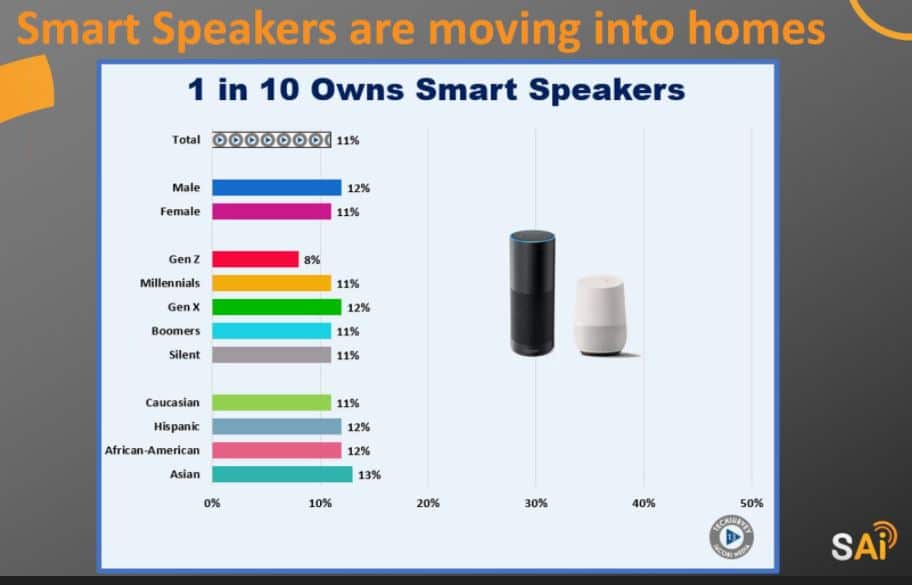In a Wednesday midday webinar, Jacobs Media President Fred Jacobs and Amplifi Media CEO Steve Goldstein teamed up to talk about how new in-home technologies are affecting radio listeners. They shared insights from Jacobs Media’s Techsurvey13, and we listened in for you to provide the key takeaways on why radio’s place in the home is going retro — and it’s all thanks to “Alexa” and her friends.
A decade ago, nearly 100% of Americans would have responded that they have a radio in the home.
Today, according to Jacobs Media’s latest research, the figure stands at just 88%.
Even more striking is the percentage of millennial respondents who said they have a radio in the home.
That figure stands at 76%.
That’s not to say people, including millennials, aren’t listening to “radio.” What are people doing, Jacobs asks? They are purchasing sono systems, and internet-powered audio command devices such as Google Home and the Amazon Echo, found to be the dominant smart speaker device among Jacobs’ survey respondents.
“We’ve been asking a lot about listening location, specifically about listening in the home,” Jacobs says. Smart speakers are poised to bring a comeback to radio listening in the home.

Meanwhile, smart TV ownership is on the rise, with a majority of Jacobs’ respondents having purchased an internet-connected device.
“This has led to an on-demand explosion,” Jacobs says. “Very few people are watching TV in real time unless you have special programs.”
With this, voice commands are starting to kick in as well — i.e., Comcast’s Xfinity X1 voice-command remotes.
Thus, Jacobs notes, smart speakers are moving into homes, and at a rapid pace.
This is good news for the radio industry C-Suite, as smart speakers are popular among listeners of all formats.
“If radio is not in the home, than this thing can be radio,” Jacobs says. “The downside is that there is Spotify, and Pandora … There’s a lot of competition out there, and the thing going forward is how to fit in to that mix.”
So, what are smart speakers used for? Radio can be a top choice, given the following statistics:

“We think streaming is going to grow, because ‘skills’ are growing at a breakneck pace,” Jacobs says.

ACTION STEPS
Goldstein suggests that media executives buy an Amazon Echo or Dot. Why? Because it would be hard to conceptualize and develop ways to get users to consume your station if you don’t understand how it works, he says.
Jacobs says that it is not as costly as the Apple product; on Amazon Prime Day costs were as low as $34.
Additionally, Goldstein and Jacobs implore that stations do more to simply make their streams available. This means getting listeners to know exactly how to connect to your station. In one example, a request for “Z100” last week dialed up a Country station in the Midwest, rather than WHTZ-FM in New York.
In closing, Jacobs says that the transmitter and tower have been the cornerstone of the radio and TV broadcast industry for decades, and will continue to be for decades to come. Yet, he says, “There are other platforms and other horizons that we can go after here. We are in a position as an industry to go and take advantage of it.”
RBR+TVBR





